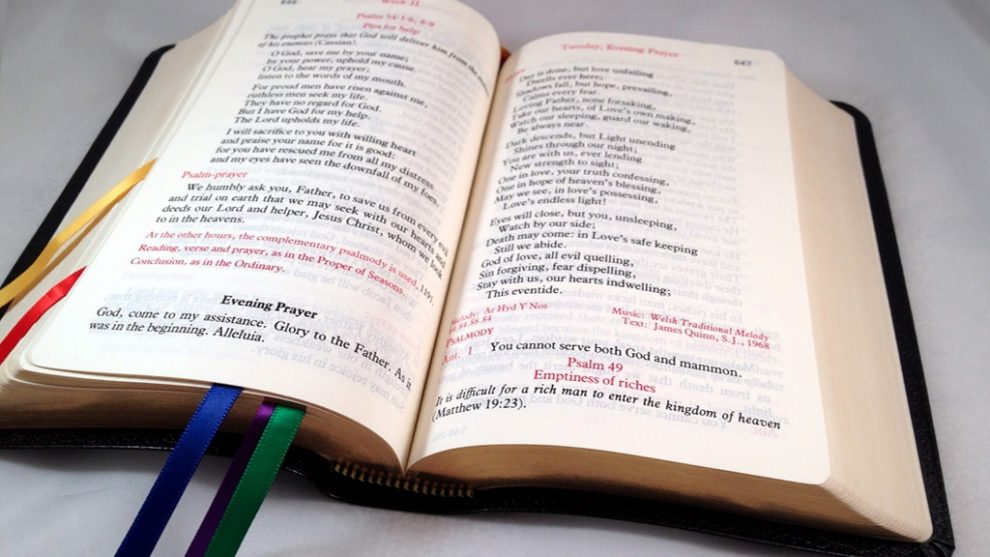The Liturgy of the Hours is a small but bulky and intimidating-looking red-bound prayer book with lots of confusing multicolored ribbons. It is that, but of course it’s much more.
Also known as the Divine Office, the Hours are comprised of a four-week cycle of the psalms, biblical readings and songs, prayers of intercession, blessings, and other readings from spiritual writings, separated into morning, evening, daytime, and night prayer, and an office (collection) of readings. It is the required daily prayer of clergy and many in consecrated religious life, but it is also a rich source of prayer for all the members of the church.
The Acts of the Apostles talks about how the early Christian community was faithful to the Jewish tradition of gathering for prayer at appointed times.
There is also the exhortation in Saint Paul’s letters to “pray without ceasing” (1 Thess. 5:17) as well as Jesus’ telling his disciples an entire parable about the “necessity for them to pray always without becoming weary” (Luke 18:1). Christians took these commands seriously. By the 200s they were gathering for morning and evening prayer. Daily prayer at regular intervals was something available to all Christians.
As the early church moved into the Middle Ages, however, the practice fragmented into two forms: The “monastic office,” the preserve of monasteries, and a simpler version, the “cathedral office,” celebrated in parish churches. Even the more accessible cathedral office, though, came to be viewed as something belonging to the clergy and therefore remote from laypeople.
Centuries went by before the Second Vatican Council, in its Constitution on the Sacred Liturgy (1963), sought to put the Hours back into the hands of the whole church. Vatican II recognized that the Liturgy of the Hours “is devised so that the whole course of the day and night is made holy by the praises of God. . . . The purpose of the office is to sanctify the day.”
The Hours are a way to grow in several aspects of prayer. They are a ritual that opens those praying to a deeper recognition of the sacredness not only of the entire day but also of all creation. They punctuate the day with prayer and thus make the times in between more prayerful.
They are a way to pray if not “without ceasing” then at least with “unceasing” consistency. They help to develop the habit of persistence in prayer. And the “public prayer of the church,” praying the Hours, whether alone or with a group, puts you in communion with the entire praying church.
Simplified versions of Liturgy of the Hours exist, but if you are going to make the effort to pray them, it’s worth going to the real thing, which, with all its ribbons, is not that difficult to learn to use. The print version, Christian Prayer: The Liturgy of the Hours, is available from the Catholic Book Publishing Co., and you can also find the Liturgy of the Hours itself online.
This article appeared in the July 2012 issue of U.S. Catholic (Vol. 77, No. 7, page 46).












Add comment